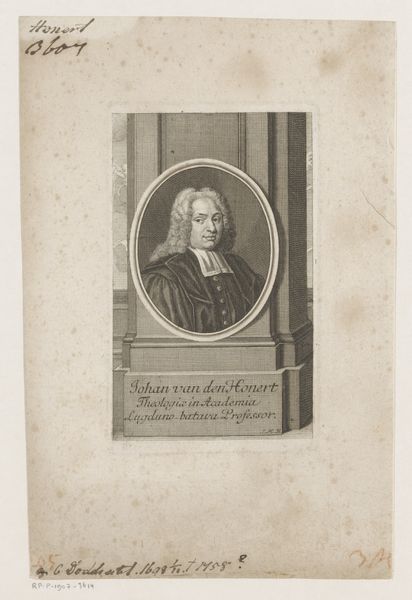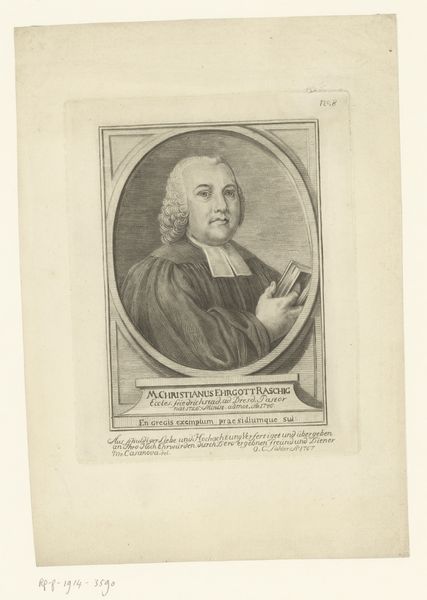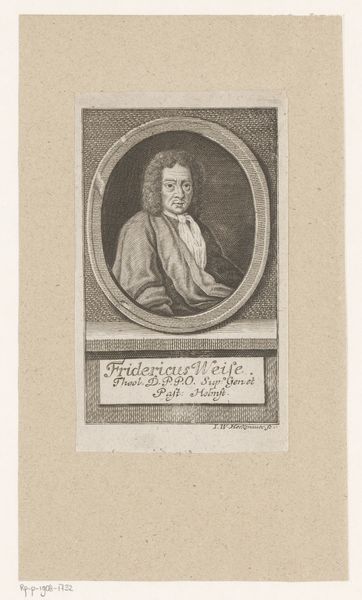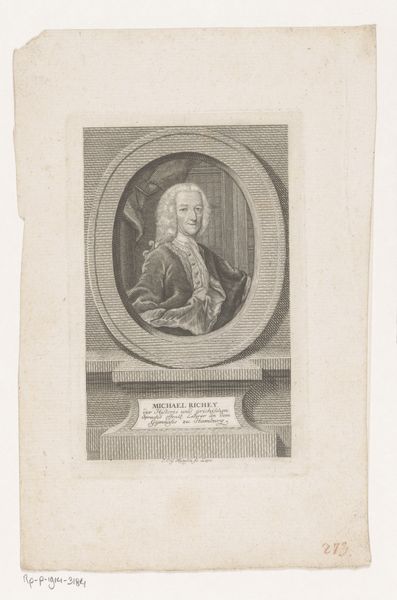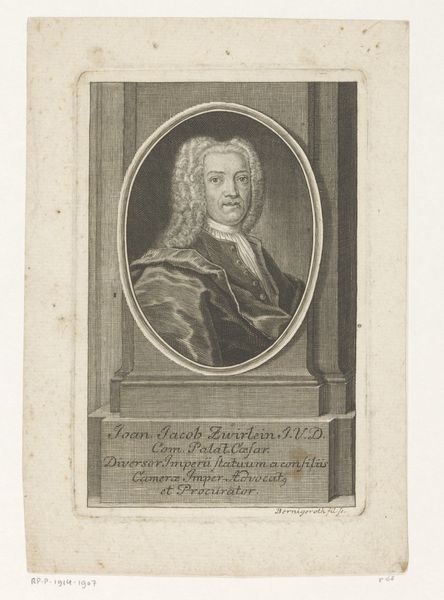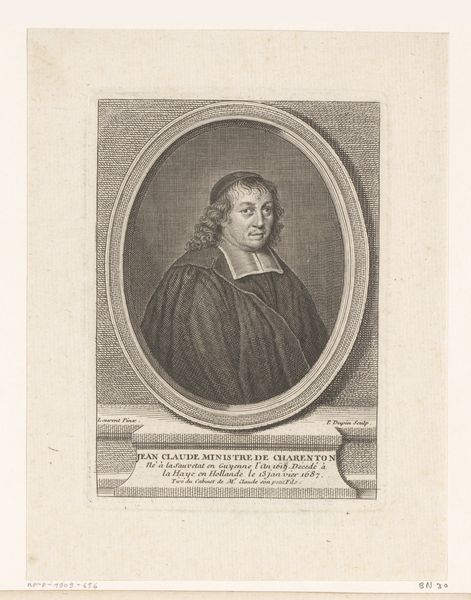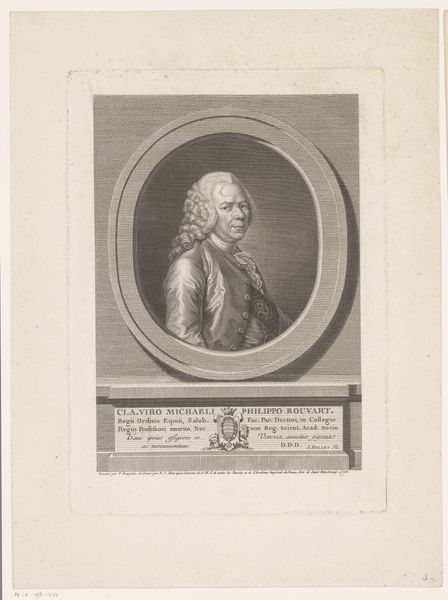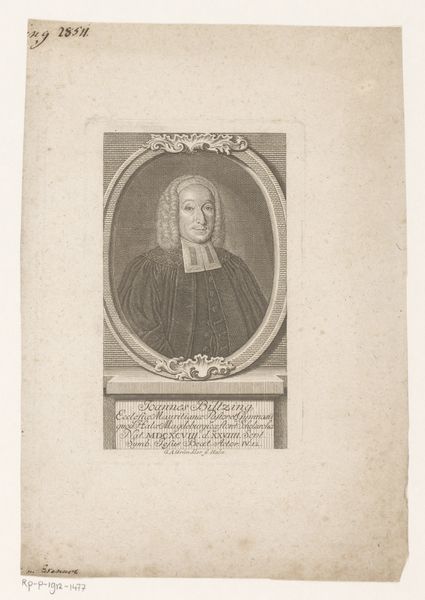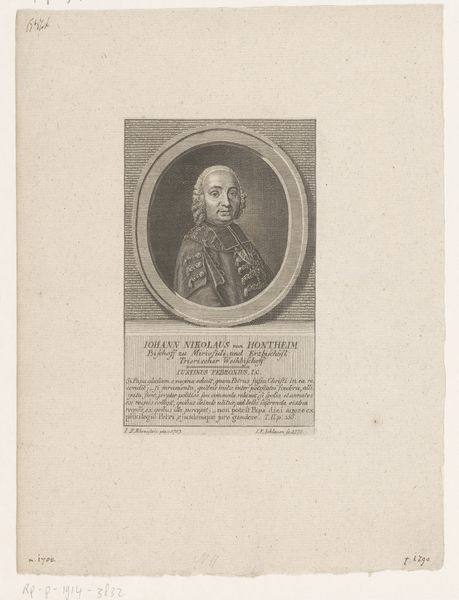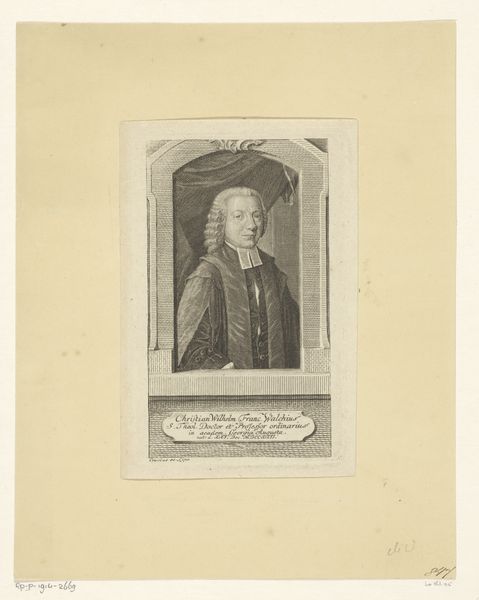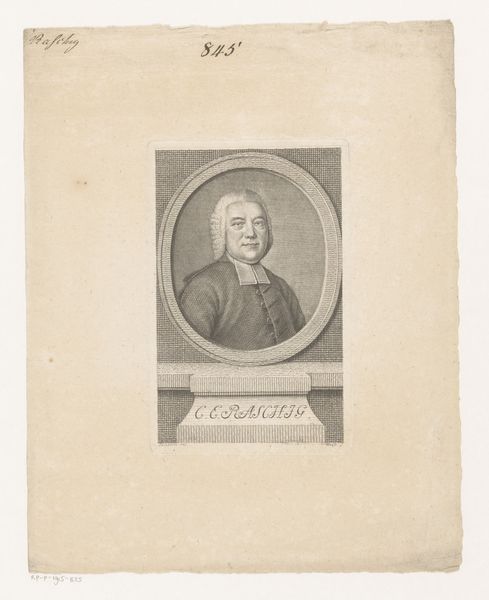
Dimensions: height 136 mm, width 83 mm
Copyright: Rijks Museum: Open Domain
Editor: Here we have Georg Friedrich Jonas Frentzel's "Portrait of Carl Otto Rechenberg," made sometime between 1764 and 1799. It's a print, so it’s on paper and created through engraving. It strikes me as a very formal and somewhat austere depiction. What catches your eye? Curator: The relationship between line and form is critical here. Notice how Frentzel utilizes the precision of engraving to define Rechenberg's features and elaborate wig. The textures achieved through the hatching and cross-hatching articulate volume and depth despite the monochromatic palette. How does the oval frame influence your reading of the piece? Editor: It contains him, I guess. It feels like it makes the image feel smaller, and maybe even older, as an art piece. It feels very controlled. Do you see anything else that speaks to a formal approach? Curator: Precisely. The oval reinforces a sense of controlled representation, typical of Baroque portraiture's academic inclinations. Furthermore, observe the inclusion of text beneath the portrait. While extraneous to the pure image, this supplementary component reinforces the sitter’s status. To consider it formally, the text’s rectangular form mirrors that of the overall print and the frame. This creates an unusual sense of unity. What is your impression? Editor: I didn’t think of the text as part of the unity. It makes sense now. Curator: Indeed. By considering these visual elements, we start to grasp the strategies at play in constructing meaning within the image itself. Editor: Thanks! I will keep that in mind as I observe artworks more carefully! Curator: An admirable pursuit, happy to help you see artworks with an analytical perspective!
Comments
No comments
Be the first to comment and join the conversation on the ultimate creative platform.
